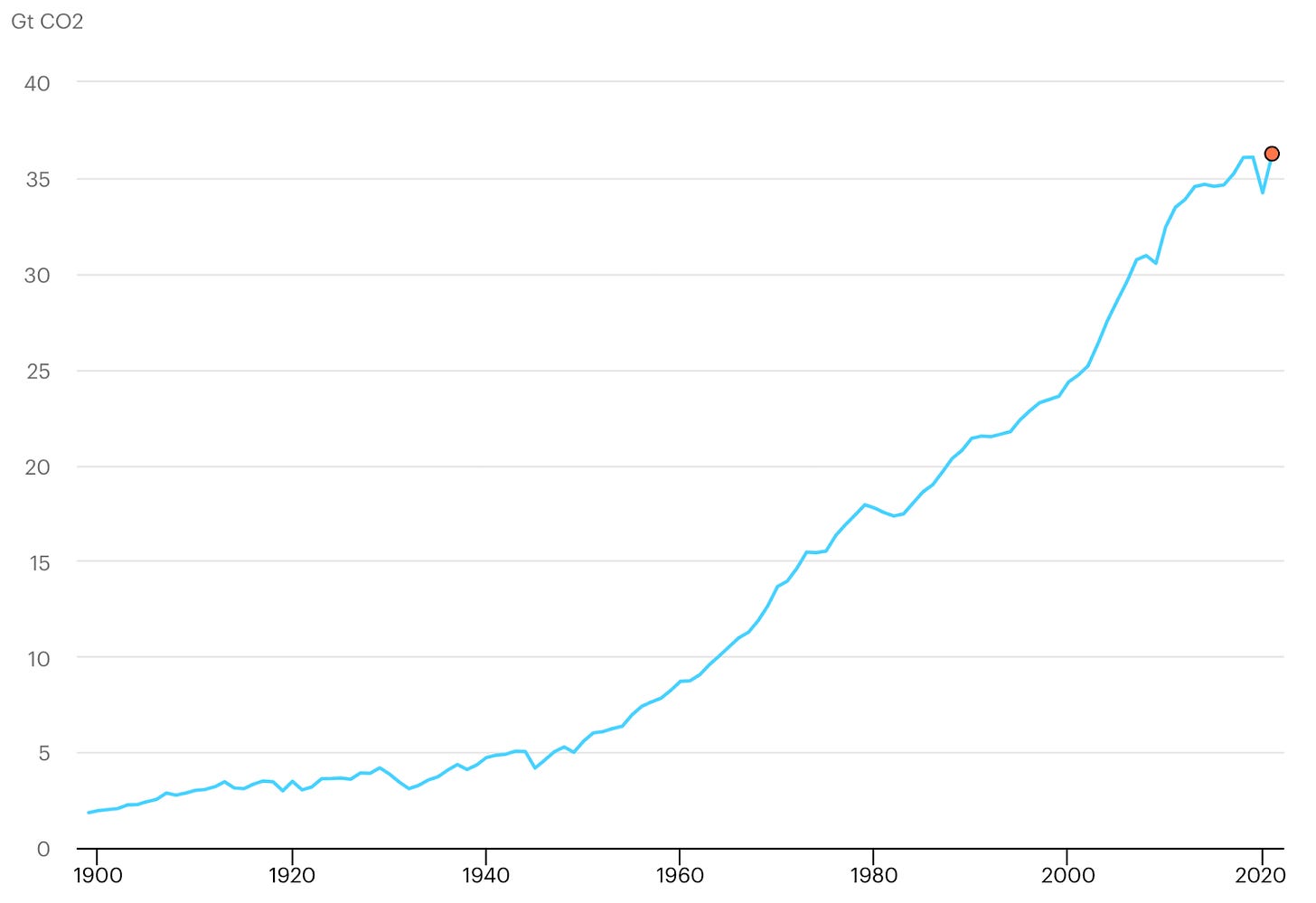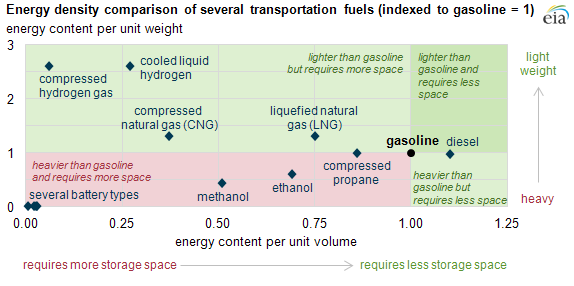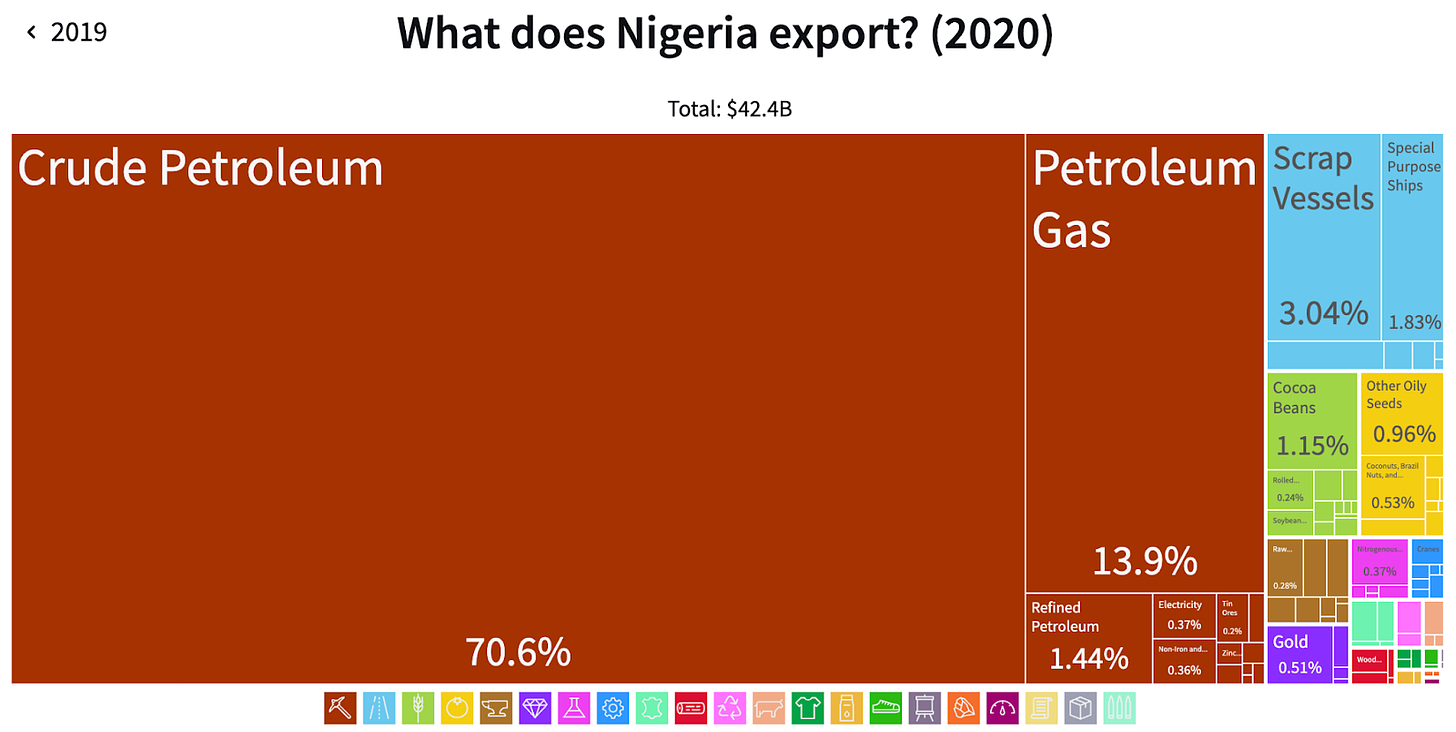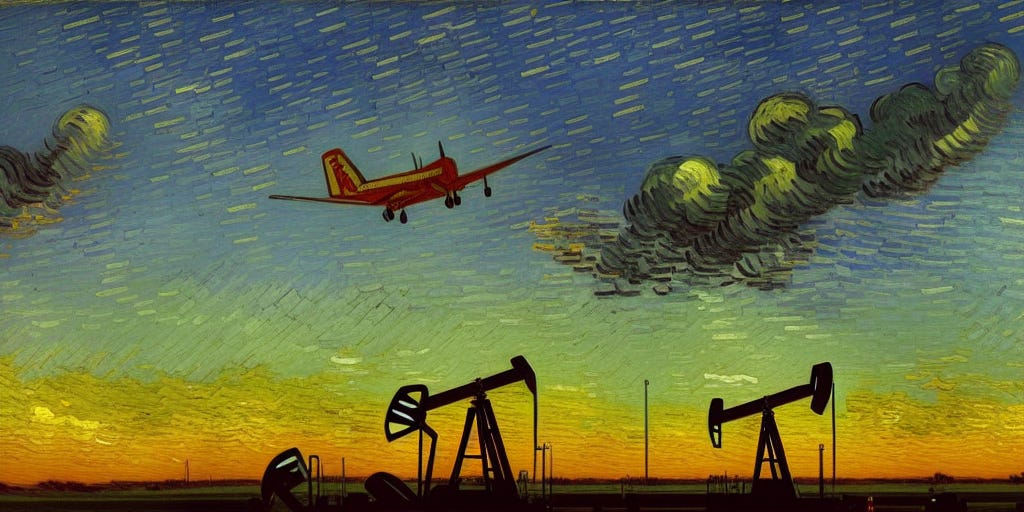Housekeeping
CTVC
I’m a big fan of the Climate Tech VC newsletter. CTVC does a hard thing well: covering the fast-moving, technical, and opaque world of capital flows in climate tech. In just two years, co-founders Sophie Purdom and Kim Zou have taken the concept from zero to 30k subscribers and cemented their status as the paper of record in climate tech. There’s no Kara Swisher in climate; we have Sophie and Kim, and they’re just getting started.
This week, I had the honor of collaborating with them on a deep dive into geothermal energy. It was fun! Here’s a teaser:
Let’s say you’re a benevolent dictator in charge of providing abundant carbon-free energy to all of Planet Earth. You see lots of solar, wind, and battery capacity coming online, which is great, but you also see energy crises happening in high-solar and wind areas. You see energy crunches in areas dependent on foreign oil and gas. You see the power of hydro, but you also see that climate change is turning hydro into a more and more variable resource. You see fusion as the potential miracle that it is, but you’ve already placed your bets on it; we’ll see how they play out. You like that nuclear fission is a baseload resource, but your subjects seem mixed (remember: benevolent dictator). You’re left thinking about one option: geothermal. What are we working with?
And while you’re at it, make sure you’re subscribed to CTVC.
Half of a career update
This isn’t a newsletter about my day job, but I invest in climate tech startups for a living, so there’s some overlap. I write about topics I’m interested in but don’t see covered elsewhere, ask for feedback on the weird things that need more attention, and have conversations with readers who reach out. Sometimes this leads to fundraising discussions with startups; other times it leads to new friendships; other times it doesn’t lead anywhere in particular, which is good too. I find it all fulfilling, and it’s helped me grow.
So today, I have an update about my day job: last week, I wrapped up my time at Azolla Ventures. I’m grateful to have spent three years helping build a top-notch organization, and I’ve been fortunate to learn a ridiculous amount from my Azolla and Prime teammates. I’m excited and a little nervous about what comes next, and I’m looking forward to telling you about it next month. I’m as fired up as ever about backing climate tech founders, and I hope to continue doing that for a long time.
In the meantime, I’ll be taking a couple weeks off to travel and rest. Adapting will continue on its usual monthly schedule.
Now back to our regularly scheduled programming.
De-extinction
Recently, I caught this snippet from our friends at CTVC:
George Church is attempting to “de-extinct” the Tasmanian tiger which was hunted to extinction in the early 20th century. Is this #climatetech? Regardless, it sure is fascinating.
I don’t know if it’s climate tech, but it’s definitely adaptation tech (should I just lean into #adaptech?).
As we frequently discuss around here, climate change is happening around us in ways large and small, routine and strange. But one thing we haven’t discussed around here is its toll on biodiversity. We’re losing a lot of species, fast.
One way to look at the last 10,000 or so years is as the time period over which humanity emerged and proliferated, built societies, discovered and harnessed electricity, went to the Moon, and so on. This tends to be my attitude. But another way to look at the last 10,000 years is as the sixth ever mass extinction event – we’re currently about 1,000-10,000x above background extinction rates. This is less fun to write about. It quickly becomes too much to bear.
Let’s take it at face value that biodiversity is good. We humans, and climate change as an arm of humanity, have caused lots of biodiversity loss. But humanity and climate change are also enormous forces. What do you do about something like extinction?
There’s regulatory intervention of course: create penalties for reducing biodiversity. Here in the US, the Endangered Species Act has done a lot of good. But the US is just one country, and there’s still a lot of biodiversity loss.
There’s economic intervention: currently, human economic activity is correlated with biodiversity loss. Reduce economic activity, reduce biodiversity loss, live in greater harmony with planetary ecosystems. I think this is a bad idea and am not sure how you’d implement it.1 But it’s an idea.
But hey, we’re getting pretty good at biotechnology these days. Coming back to the topic at hand, maybe we can bring species back from the dead?
Colossal Biosciences, co-founded by Harvard University geneticist George Church and tech entrepreneur Ben Lamm, is working with the University of Melbourne’s Andrew Pask, who has already sequenced most of the [Tasmanian tiger] thylacine genome. The thylacine is the perfect candidate for de-extinction, Pask says, because it died out relatively recently, good-quality DNA is available, and its prey and parts of its natural habitat still exist.
In March his team established the Thylacine Integrated Genetic Restoration Research Lab with a philanthropic gift of five million Australian dollars (about $3.6 million). Colossal is providing “more than that” sum, Pask says—he won’t divulge exactly how much—as well as access to equipment, another dedicated thylacine lab in Texas and a large team of researchers.
This is cool: because we have DNA from a recently extinct species and an increasingly powerful set of biotechnologies, we might literally be able to pull off a de-extinction. This would be a proof of principle for reversing, rather than merely slowing down, biodiversity loss.
As far as I know, this would be a fundamentally new capability. Conservation, as its name implies, is a defensive effort: protect habitats, block irresponsible development, track at-risk species. But we now have the opportunity to go on offense.
About a million thoughts flow from here. A brief selection in no particular order:
How would you reintroduce a species into the wild and have any hope of success? I mean, we have the receipts: it didn’t go that well the first time around for the thylacine. What’s different this time?
What data would you need to show before release into the wild? What proof points would be sufficient, and whose sign-off would you need?
The status quo is powerful. Will people want the old/new species on their land?
Will governments have any idea how to regulate this? I actually think we have a decent shot at getting this part right, since we already have a history of introducing foreign species into new places.
How could we kick-start intra-species biodiversity to ensure the greatest chance of survival?
Jurassic Park when?
If this all sounds fraught, I’m not going to tell you you’re wrong. And unsurprisingly, there are critics:
Other critics worry the glamour of de-extinction will rob attention and funding from conservation projects. One study in 2017 found that allocating sums to existing endangered species programs rather than giving the same amount of money to de-extinction efforts would see about two to eight times as many species saved. “It’s better to spend the money on the living than the dead,” lead author Joseph Bennett of Carleton University in Ontario told Science.
I might even be a critic myself – don’t know yet. There are lots of ways this can go wrong, and in public-facing materials, the Colossal team doesn’t seem to be grappling with them.
However, I mention this criticism not because I agree with it, but to highlight the argument in this passage: Why de-extinct species when we could protect the ones we have instead, for less money?
This argument reads almost identically to an argument we have in climate circles all the time: Why reduce emissions by building solar and wind when we could conserve energy instead? Why develop carbon removal technology when we could reduce emissions instead? Why study solar geoengineering when we could remove carbon instead? People are worried about misspent dollars, unintended consequences, moral hazard, and plain old distraction. To varying degrees, I think these are valid worries. But I still think this is an unproductive argument.
The argument we’re really having is whether or not we should put another tool in our tool belt, and I’m disappointed by how often people say we shouldn’t. If you really believe that climate change is a serious threat, you should want as many options as possible – whether or not we need to use them, and whether or not they’re down the cost curve yet. Developing sets of well-regulated options is how we deal with threats of all kinds – seatbelts to nuclear deterrents. In this case, there are lots of reasons not to bring species back from extinction, but I don’t think being anti-options is not a good one. So, I’m in favor of seeing if we can pull it off, but I’m not sure yet if we should actually do it.
Here’s something else on my mind. How does Colossal plan to make money? I’d feel better about this if that were clear. When you understand how a company makes money, you understand a lot more about its incentives. Here’s Carl Zimmer in NYT:
How will these mammoths make any money? Mr. Lamm predicted that the company would be able to spin off new forms of genetic engineering and reproductive technology.
Tigers and mammoths are a way to generate publicity en route to other money-making spinoffs? I don’t know. So, this is cool, and maybe directionally correct. But I have questions.
The case for decarbonizing oil and gas
We don’t like to talk about this in climate tech, but oil and gas are not going anywhere soon. Many of us lead pretty good lives, and a lot of it is the result of cheap petroleum. We should (and do!) seek to decouple quality of life from oil and gas, but the numbers are not on our side. This could be a whole post (or PhD thesis) in itself, but I’ll boil it down to an experiment we accidentally ran in 2020.
Q: How much do you reduce GHG emissions when you shut down the economy?
A: About 7%, and then they bounce right back.

You know the story. Essentially overnight, we deleted a good chunk of economic activity (planes, commutes, etc.) for much of 2020, but emissions barely moved. We have substitutes in the pipeline, like hydrogen and broad electrification, but they don’t apply everywhere. Even the IPCC acknowledges that a lot of activity will require oil and gas for a long time.
This isn’t a happy conclusion. But it does lead to a clear next step: We must decarbonize oil and gas.
What does that mean? To me, three things:
Make carbon-neutral oil and gas in a cost-competitive way
Offset oil and gas-related CO₂ emissions with permanent carbon removals
Reduce emissions associated with producing and refining oil and gas
Numbers 1 and 2 won’t be our focus. Many have tried and failed to make synthetic oil from CO₂, most notably a wave of biofuels startups in the mid-2000s that projected >$100/barrel oil into the future (spoiler alert). And carbon removal now thankfully receives a lot of coverage elsewhere, transitioning over a few years from fringe and controversial to mainstream.
We’re going to talk about number 3. This is more controversial, but I don’t think it should be. So let’s dive in:
1. Oil and gas are products just like any other
If you care about decarbonizing the production of other products — cement, plastics, textiles, food, and so on — you should care about decarbonizing oil and gas production.
Let’s say you’re a manufacturer of black boxes. You buy raw materials, put them through your process, formulate it into black boxes, sell them, ship them away, and then collect payment. In producing your black boxes, you used energy, and that energy use created GHG emissions. Yeah, maybe someone used that black box for a purpose you didn’t like, or just burned it or whatever, but it’s not really in your hands.
Now let’s say your raw material is crude oil and your product is everything a refinery sells: gasoline, kerosene, fuel oil, and so on. The same thing is true: you need energy to refine it into products. Conveniently, you have a lot of energy lying around in your crude oil, so you burn some of it. But here, the product isn’t a black box, it’s a major driver of climate change, so it’s all a bit more fraught.
but it’s one of the most consumed commodities on the planet. Why should you treat production emissions any differently? Through refining, the oil and gas industry emits about 1.3 gigatons of CO₂ emissions per year. That’s a huge amount of emissions, but we’re also talking about a huge amount of product – 4.2 gigatons of oil, and 4 trillion cubic meters (about 2.7 gigatons) of natural gas. Refineries siphon off a small amount of their crude to power operations.2
Should we reduce that number? There’s some disagreement here. There are basically three answers:
Hell no! I want the oil industry to be as dirty as possible, so that we’re motivated to eliminate it and stop climate change.
Yes, but I don’t want to be the one to do it – because I don’t want to play a part in prolonging the oil and gas industry’s lifetime, because I don’t think it’s investible, because I think it’s in structural decline, because I don’t like oil and gas, etc.3
Hell yes! This industry is the backbone of the global economy, and while that’s the case, we should make it as clean and efficient as possible.
I think number 3 is right, but I understand what would lead someone to 1 or 2.
In any case, it’s already in the industry’s interests to operate relatively efficiently. Companies want to minimize loss, and also to comply with environmental regulations.4 There’s a range of other technologies that can further increase efficiency and further reduce production emissions in oil and gas. Two startups working on interesting approaches here are Thiozen and Osmoses. Either, if successful, could reduce emissions at the gigaton scale.
2. Oil and gas are exceptionally good products
A big part of the reason it’s hard to decarbonize our world is that fossil fuels are exceptionally good products. Are they the right tool for every job? Of course not. But they do some things very well.
Fossil fuels are very energy dense, portable, and relatively safe. Not a lot else can offer that combination. As we in the climate tech community strive to decarbonize everything, we’re finding out that the things that fossil fuels are particularly good at — flight, long-haul transport, heat generation, etc. — are going to be tougher.

Looking at this EIA chart, if you wanted to replace jet fuel (approximately diesel) with today’s lithium-ion batteries, you’d need to devote much more of the plane’s weight and volume to fuel, and you’d lose the ability to transport quite a bit of cargo or people. Aviation is one clear case, but there are many others with different sets of metrics: shipping, fertilizer production, ironmaking, and so on. It’s possible that some of these never go through fuel switching. Where there’s risk of that, we ought to at least produce it cleanly – fewer emissions to offset.
It wasn’t a given that oil and gas would catch on. The early chapters of The Prize cover (among many other things) how hard it was to sell oil in the industry’s early days. Oil hadn’t yet achieved product-market fit. Subsequent decades saw that change dramatically, as engineering, marketing, and of course, lobbying improved. This took a while, and it might still take a while to undo. The incumbent technology is really good.
3. Oil and gas are lifelines we can’t sever yet
There’s a “hostage” argument that people make. It goes something like: Seems like you really like your fossil-fueled modern conveniences there. Shame if something were to happen to them. I don’t think this a good argument. It’s anti-progress and anti-growth, two things we don’t like around here.
That being said, there’s some truth to it. We’ve designed critical societal systems to be dependent on the flow of oil and gas. Think: Hospitals run on gas-powered electricity, diesel-powered backup generators, militaries powered by JP-8, or the South Pole research station both powered and heated by a diesel CHP plant.
 Tiktok failed to load.
Tiktok failed to load.Enable 3rd party cookies or use another browser
Okay, maybe that one’s not so critical to society.
I’m not saying we must continue growing the industry’s size and scope – quite the opposite – but rather that it’s deeply enmeshed in modern society in ways large and small. Especially relevant to this newsletter, fossil-powered systems also offer resilience in the face of climate change. If we do fully sever the lifeline one day, we’d better have good replacements for just about every last thing we do with a barrel of oil.
There’s another angle: entire nations are built on fossil fuel resources. If you’re the leader of a nation, and your country happens to sit on substantial oil reserves, it would be a breach of duty not to produce that oil. It’s your country’s economic lifeline, and it’s your political lifeline.
There are the obvious cases like Saudi Arabia and the UAE, but let’s take a look at a different country: Nigeria. Nigeria will be the 3rd most populous country in the world by 2050, but it ranks 163rd in GDP per capita, and oops, it’s a petrostate. Here’s a look at its exports:

But who are we to stop the country from making the most of its resources and attempting to lift its people out of poverty? Or maybe a better question: realistically, how could you even stop that from happening?
4. Efficiency is good
When Chevron divests a leaky or inefficient asset, it doesn’t disappear. It gets sold to another oil company who is willing to accept the tradeoff between the asset’s underlying performance and bad PR. These buyers are typically private companies or state-owned enterprises that can keep a low profile, so there isn’t much bad PR to fend off. Everyone benefits from the trade, but no emissions have been reduced.
Now assume there’s some revolutionary technology that reduces upstream and midstream emissions by half, with a relatively small up-front cost. If you’re a refinery owner, even if you’re staunchly anti-ESG, well now you’d be missing an opportunity to increase your revenue and make your shareholders happy.
Here’s where it matters that we’re not talking about cement or steel or black boxes, but oil and gas. The energy powering production is the product itself.5 It’s important to note that oil and gas production efficiency is a weird case, because the energy powering production is the product itself. So if you save 1 barrel of oil by making refining more efficient, you’re now able to sell one more barrel, which customers will end up burning anyway. The same amount of CO₂ is emitted.
However, there’s a difference. That incremental CO₂ spend has not been in vain. By increasing efficiency, you’ve now enabled incrementally more human activity to take place: running a hospital, powering a military, fueling and heating the South Pole research station. Things like this are the whole point of producing energy.
If this argument isn’t landing, think of if this way: it’s the same argument behind making air conditioning more efficient, requiring catalytic converters on cars, and putting Energy Star stickers on appliances. Energy efficiency is good.
Zooming out
Let me be the first to say that there are lots of reasons one might consider all these factors and come out on the other side. Worried about the Rebound Effect? Good, you should be! Worried about good PR for oil and gas companies? We’ll have to grapple with that.
I can’t shake the feeling that we can decarbonize oil and gas at the gigaton scale while continuing the steady march of societal progress. Oil and gas is going to exist a while longer. If we look away, it will continue polluting more than it needs to. But if we give it a closer look, I think we’ll find that there’s a lot of low-hanging fruit.

Global weirding
You’ve made it this far. Let’s do a fun one.
China has a water problem. To ease the strain, the government has initiated rain enhancement projects.6 We’ve talked about rain enhancement in other posts, and long story short: it seems like it sort of works, but there’s a lot that can go wrong and a lot that we can’t know ahead of time.
Anyway, here’s what happens when you point your rain enhancement rocket in the wrong direction:
I think it’s safe to say that even geoengineering skeptics didn’t see this one coming.
I don’t have a whole lot to say about this, but here’s a thought: imagine you’re that street vendor in Sichuan, going about your day. Maybe you’re aware of this whole climate change thing, but you’re definitely aware of the drought, and you vaguely know the government is trying to do something about it. A strange rocket crashes down nearby. You scream, you expect it to explode, maybe your life flashes before your eyes. But then it just sits there, and you make out the words “NON-TOXIC AND HARMLESS. PLEASE DON’T PANIC.” A party official hurriedly comes to take it away. You roll your eyes.
Adaptation is gonna be weird, man.
Elsewhere:
Thanks for reading!
Please share your thoughts and let me know where I mess up:
Implement it on purpose, anyway. Rulers don’t gain power by promising prolonged recessions, and prolonged recessions tend not to lead to stable, prosperous, and decarbonized societies.
Most of the mass of CO₂ is oxygen, so if you just look at the mass of the carbon lost in the refining process, it’s only about 0.4 gigatons.
There are now anti-ESG funds that believe this attitude is widespread enough to generate outsized returns.
Clearly, not perfectly!
We’re oversimplifying, there are different fractions to consider, but you get it.
As a side note, I get the sense that people don’t consider enhancement to be “geoengineering.” This is probably good for rain enhancement’s brand – people don’t really like geoengineering. But I think it should count.




